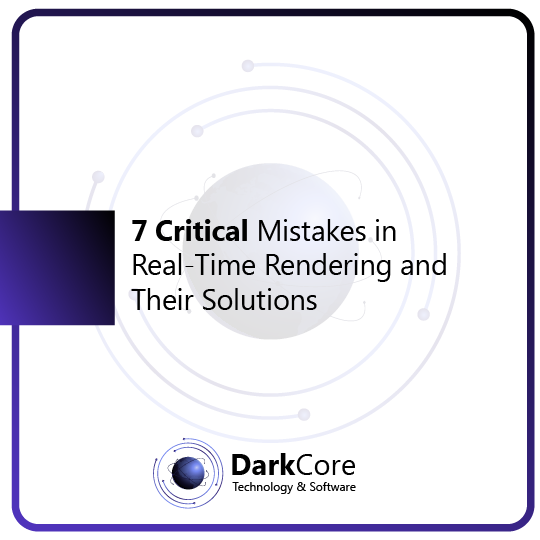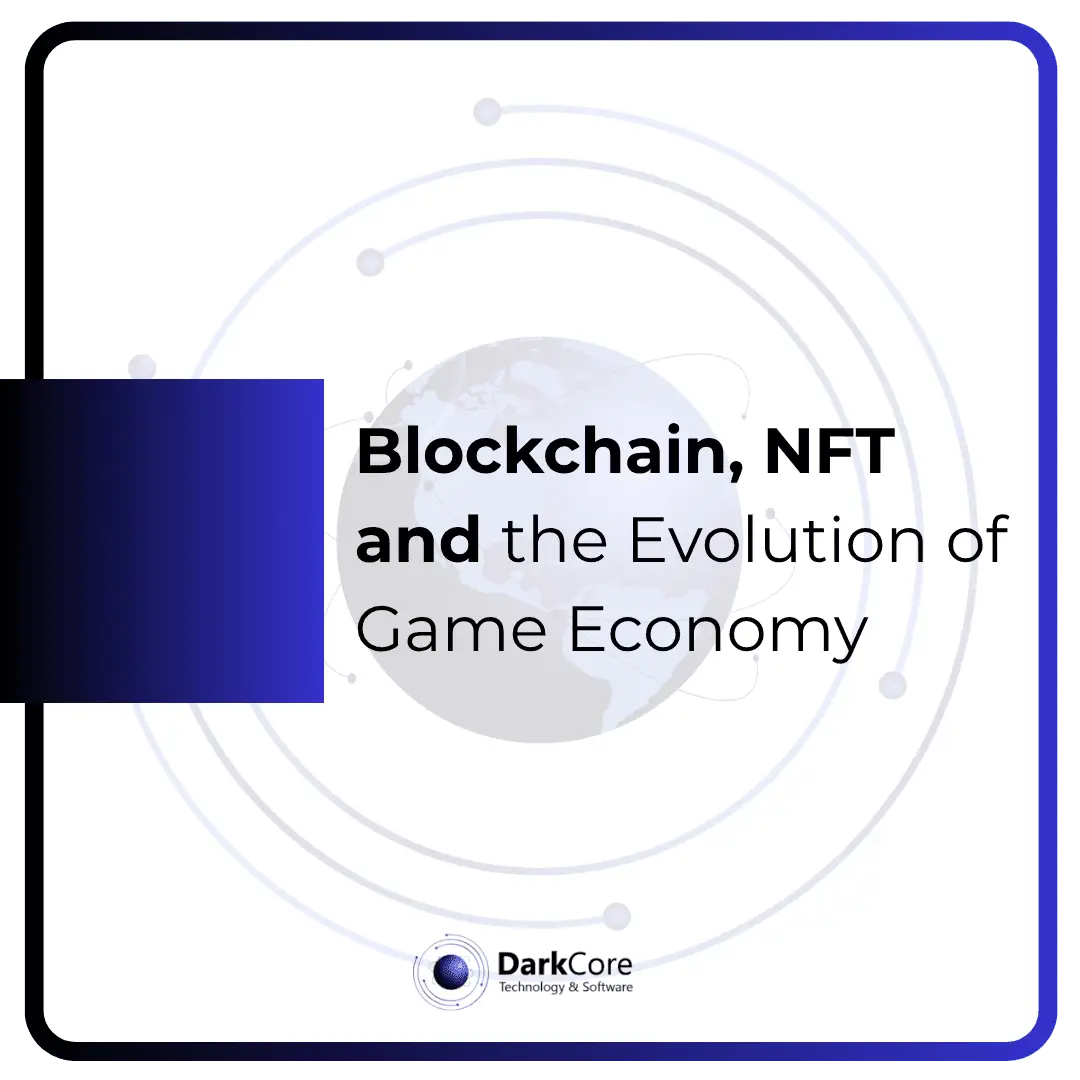Today’s games hinge on real-time rendering performance. Maintaining high visual fidelity while keeping frame rates steady directly impacts player experience. Yet developers often fall into these seven common pitfalls:
1. Excessive Polygon Density
The Excessive Polygon Density Management layer optimizes heavy 3D models on the GPU to preserve frame rate without sacrificing visual quality:
1.1. Dynamic LOD (Level of Detail) Architecture
- Multi-Level Meshes: Define at least three discrete LOD levels per model (high, medium, low). At runtime, continuously monitor the camera-to-model distance or on-screen pixel coverage and switch LOD when thresholds are crossed.
- Continuous LOD (CLOD): To eliminate pop-in artifacts, apply geomorphing or vertex-shader interpolation between two adjacent LODs for smooth transitions.
1.2. Intelligent Culling & Visual Filtering
- Frustum Culling: On the CPU, discard any object outside the view frustum before sending geometry to the GPU, using bounding-sphere or AABB tests for fast broad-phase removal.
- Occlusion Culling: Use hardware depth-prepass or stencil masks and external occlusion queries (or a Hierarchical Z-Buffer) to skip rendering of hidden objects.
- Screen-Space Error-Based Culling: Within your shaders, measure screen-space error tolerance and dynamically switch to lower-detail meshes when acceptable.
1.3. Mesh Optimization & Data Structures
- Progressive Meshes & Vertex Cache Optimization: Reorder indices via Forsyth or Tipsify algorithms to maximize vertex-cache hit rate. Use progressive mesh formats to incrementally add geometry on demand.
- Geometry Instancing & Batching: Draw repeated elements (grass, rocks) in a single call via instancing, sending only transform variances to the GPU.
- Offline Mesh Simplification: Generate automatic LODs with Quadric Error Metrics or Garland–Heckbert, or use Unity/Unreal mesh-simplifier plugins for error-bounded decimation.
1.4. GPU Pipeline & Shader Techniques
- Dynamic Tessellation Control: Leverage hardware tessellation: increase detail close to the camera, reduce it farther away by computing LOD in Hull/Domain shaders.
- Vertex Fetch & Memory-Bandwidth Optimization: Use interleaved vertex buffers and tightly packed attribute streams; have shaders discard unused attributes to reduce ALU load.
- Compute-Shader LOD Decisions: Offload LOD selection to compute passes on the GPU, feeding results into tessellation or indirect-draw buffers to relieve the CPU.
1.5. Performance Monitoring & Tool Integration
- Runtime Profilers: Use GPUProfiler, RenderDoc, NVIDIA Nsight or AMD GPU Profiler to measure LOD-switch costs and per-draw-call polygon counts in real time.
- Automatic Calibration: If frame rate dips below target (e.g. 60 FPS), adaptively tighten distance thresholds to switch to lower LODs sooner.
- CI/CD Pipeline Integration: Automate LOD generation, enforce max-triangle and error thresholds in the asset import pipeline, and run test scenes pre-commit for early feedback.
2. Synchronous Data Transfers
The GPU Data-Transfer Optimization layer minimizes CPU→GPU transfer bottlenecks so the render pipeline stays fed:
2.1. Asynchronous Buffer Updates (PBO / Upload Heaps)
- Pixel Buffer Objects (PBOs) or D3D11 Upload Heaps: Stage updates in asynchronous buffers (OpenGL PBOs, D3D11 Upload Heaps, Vulkan Transfer Buffers) instead of blocking GPU memory directly—letting the CPU continue without waiting for GPU sync.
- Two-Tier Staging: First map with unsynchronized flags (
GL_MAP_UNSYNCHRONIZED_BITorID3D11DeviceContext::Map), write data, then enqueue a DMA transfer to the real GPU buffer.
2.2. Double & Triple-Buffering Techniques
- Double Buffering: Use two buffers so one is rendered while the other is presented—avoiding CPU/GPU contention on the same resource.
- Triple Buffering: Add a third buffer to further decouple CPU draw submission from GPU presentation, reducing stalls.
2.3. Ring-Buffer (Circular Buffer) Usage
- Persistent Mapped Ring Buffer: In Vulkan or DX12, map a large buffer persistently. Each frame, the CPU writes at a new offset while the GPU reads the previous frame’s data. Use fences (
vkCmdPipelineBarrier,ID3D12Fence) to avoid overlapping writes. - Sub-Allocation to Reduce Fragmentation: Break large writes into queued small updates, keeping the pipeline steadily fed without big-block transfers.
2.4. Command-Queue & Parallel Processing
- Dedicated Transfer vs. Graphics Queues: In Vulkan, submit copies on a transfer-capable queue (
VK_QUEUE_TRANSFER_BIT) separate from the graphics queue (VK_QUEUE_GRAPHICS_BIT) to avoid mutual blocking. - Asynchronous CUDA/EGL Interop: For large datasets, share buffers directly between CUDA/OpenCL and graphics APIs, bypassing extra memcpy steps and maximizing PCIe bandwidth.
2.5. Synchronization Nuances & Pipeline Barriers
- Prepare vs. Use Barriers: Apply fine-grained memory barriers (
GL_CLIENT_MAPPED_BUFFER_BARRIER_BIT,TRANSFER_READ_BIT,VERTEX_ATTRIBUTE_READ_BIT) to ensure visibility without global stalls. - Minimize Flush/Finish Calls: Avoid global syncs (
glFlush,vkQueueWaitIdle); use targeted fences (VkFence,ID3D12Fence) to wait only on the necessary transfer operations.
2.6. Performance Measurement & Dynamic Tuning
- Profiling Tools: Analyze buffer upload times, queue-wait durations, and PCIe usage in RenderDoc, NVIDIA Nsight or AMD GPUPerfStudio.
- Adaptive Update Strategies: Automatically adjust update sizes and buffer counts based on FPS targets, keeping CPU–GPU asynchrony within an optimal window.
3. Ray-Tracing Overuse
The Ray-Tracing Overuse Management layer curbs the heavy cost of full-scene RT while preserving realism via hybrid methods:
3.1. Selective RT on Critical Lights
- Ray-Tracing Volume Segmentation: Partition the scene into “hotspots” where shadows/reflections matter (e.g. near shiny or metallic surfaces) and use rasterized GI elsewhere.
- Adaptive Ray Budgeting: Dynamically throttle per-frame ray counts by scene complexity and FPS target; e.g. apply SSDO or SSR pre-filters, then dispatch extra rays only for high-priority pixels.
3.2. Hybrid Rendering Architecture
- Raster + Ray-Tracing Combo: Compute primary visibility via the raster pipeline, then invoke RT cores only for reflections, refractions, and soft shadows—keeping most work on raster units.
- Denoising & Temporal Accumulation: Use spatial/temporal denoisers (NVIDIA NRD, Intel OIDN) to clean low-sample RT outputs and temporal reprojection to reuse past results, reducing ray counts.
3.3. LOD Integration for Lights & Materials
- Light-Source LOD: Switch between detailed RT shadow maps for nearby lights and PCF shadows for distant lights.
- Material LOD & Roughness Blurring: Increase roughness for distant reflective materials, letting cheaper raster approximations stand in for expensive RT sampling.
3.4. Command & Resource Management
- Asynchronous Ray Dispatch: Submit ray tasks on a separate queue from graphics to avoid blocking.
- Persistent Acceleration Structures: Prebuild TLAS/BLAS for static geometry; perform minimal refit or rebuild only for dynamic objects—shortening prep time for ray-gen shaders.
3.5. Profiling & Auto-Tuning
- Performance Tools: Monitor RT-core usage, queue latency, and denoise times in GPUView, RenderDoc or NVIDIA Nsight.
- Adaptive Quality Scaling: If FPS drops, reduce ray counts or disable non-critical ray types (shadows, reflections) according to predefined profiles—maintaining an acceptable visual baseline.
4. Shadows & HDR Processing
High-resolution shadow maps and tone mapping can strain GPU memory. The Shadows & HDR Layer balances detail and performance:
4.1. Dynamic Shadow Atlases
- Partition large shadow-map regions into tiles allocated on demand, reusing atlas space for active lights and evicting tiles for distant or inactive sources.
4.2. Adaptive Tone Mapping
- Analyze luminance histograms per frame to adjust key and burn-out parameters dynamically—avoiding expensive full-screen passes when global exposure stays within stable bounds.
4.3. Cascade & Clip-Space Shadows
- For directional lights, use Cascaded Shadow Maps (CSM) with split distances tuned at runtime based on camera speed and scene depth range to minimize wasted resolution.
4.4. Shader-Level Optimizations
- Compress shadow depth data in G-buffers; use single-channel formats and pack multiple cascade offsets into fewer textures to reduce memory footprint.
4.5. Profiling & Calibration
- Employ GPUFrameCapture tools to measure shadow-pass memory use and shader invocations, then tune atlas tile sizes or reduce the number of tone-mapping iterations as needed.
5. Memory Leaks & Management Bugs
Unreleased GPU resources lead to out-of-memory errors over time. The Memory Leak & Management layer combines telemetry and automated cleanup:
5.1. Detailed Profiling & Telemetry
- Use NVIDIA Nsight Compute, AMD GPU Profiler or RenderDoc Memory Viewer to chart each buffer, texture, and heap’s size, lifetime and usage patterns.
- Instrument per-frame memory counters (peak, average, available) via NVTX or Tracy for timestamped trend reports.
5.2. Manual & Automated Leak Detection
- Enable Vulkan Validation Layers or DirectX Debug Runtime to catch heap corruption and missing free calls (
vkAllocateMemory,glBufferData,CreateCommittedResource). - On shutdown or scene swaps, run reference-count or tracer audits to list resources with nonzero refs.
5.3. Automated Resource-Lifecycle Management
- Wrap GPU handles in C++ RAII wrappers (
std::unique_ptrwith custom deleters) to guaranteeRelease()/Destroy()on scope exit. - Implement a deferred-free queue: accumulate stale resources for safe release once the GPU has finished using them.
5.4. Memory Pools & Sub-Allocation
- Pre-allocate large pools for vertex, index and uniform buffers; sub-allocate small chunks to reduce fragmentation and allocation overhead.
- Use buddy or slab allocators: allocate in power-of-two blocks, grouping similar-sized short-lived objects for bulk free.
5.5. Real-Time Defragmentation & Eviction
- Schedule idle-time compute-shader passes to defragment GPU memory and transparently remap moved resources.
- Evict least-recently-used textures/buffers to system RAM or disk staging when GPU memory dips below thresholds.
5.6. Automated Alerts & Self-Healing
- Trigger
collectGarbage()ortrimMemory()when free GPU memory falls under 10 %. - In persistent leak scenarios, restart the render context or container via orchestrator health checks (Docker/K8s liveness probes).
6. Excessive Shader Variants
Too many shader permutations bloat compile times and runtime overhead. The Shader-Variant Reduction layer minimizes variants by modularizing common code:
6.1. Modular Shader Libraries
- Extract shared functions (lighting models, utility math) into include-style libraries or HLSL/GLSL modules, referenced by entry-point shaders rather than duplicating code.
6.2. Compile-Time Feature Flags
- Use centralized preprocessor defines for optional features; group related toggles into single flags to limit combinatorial explosion.
6.3. Pipeline State Objects (PSO) Bundling
- Precompile common PSOs (sets of shader+state) at load time and reuse them across materials with runtime uniform binding instead of dynamic compilation.
6.4. Runtime Specialization
- When available, leverage APIs like DX12’s dynamic shader linking or Vulkan’s pipeline libraries to assemble final PSOs from shared shader modules without full recompilation.
6.5. CI/CD Shader Validation
- Integrate shader-variant build and lint checks into your CI to catch redundant or unused permutations early, pruning your shader graph before release.
7. Synchronization Bugs
Misconfigured locks in a multithreaded rendering pipeline cause stalls. The Synchronization-Error Management layer applies fine-grained locking and lock-free patterns:
7.1. Lock Granularity Strategies
- Favor multiple small mutexes or spinlocks guarding narrow critical sections (e.g. a mesh’s preprocess queue) over a single global mutex.
- Use reader-writer locks where reads far outnumber writes to allow concurrent reads without blocking.
7.2. Task-Based Multithreading
- Implement a job system with a dependency DAG to break large tasks (culling, skinning, lighting) into subtasks scheduled dynamically—minimizing explicit locks.
- Employ work-stealing queues so idle workers pull tasks from others, avoiding contention on a central queue lock.
7.3. Lock-Free & Atomic Techniques
- Use atomic compare-and-swap (CAS) to build lock-free queues or pools (
std::atomic, lockfree::queue), eliminating race conditions. - For shared data updates, use double- or triple-buffering with a single atomic flag swap rather than locks.
7.4. Asynchronous Pipeline & Barriers
- In Vulkan, use fences (
vkFence) aftervkQueueSubmitand semaphores (vkSemaphore) to sync transfer vs. graphics work precisely—avoiding global waits. - Limit pipeline barriers (
vkCmdPipelineBarrier, D3D12ResourceBarrier) to only the necessary stages (TRANSFER→VERTEX_READ, FRAGMENT_WRITE→COLOR_ATTACHMENT).
7.5. Profiling & Contention Analysis
- Profile lock usage and wait times with Intel VTune, NVIDIA Nsight Systems or Tracy to identify hotspots.
- Collect OS-level mutex wait counts and durations to pinpoint and optimize critical locks.
7.6. Best Practices & Code Hygiene
- Use scoped locks (
std::lock_guard,std::unique_lock) to guarantee unlocks on scope exit and prevent forgottenunlock()calls. - Enforce consistent lock-ordering and consider time-outs (
try_lock_for) to prevent deadlocks.
These layered solutions help you identify and eliminate real-time rendering bottlenecks—striking the ideal balance between peak visual quality and smooth performance. Empower your pipeline with DarkCore’s tools to detect and optimize every bottleneck.








